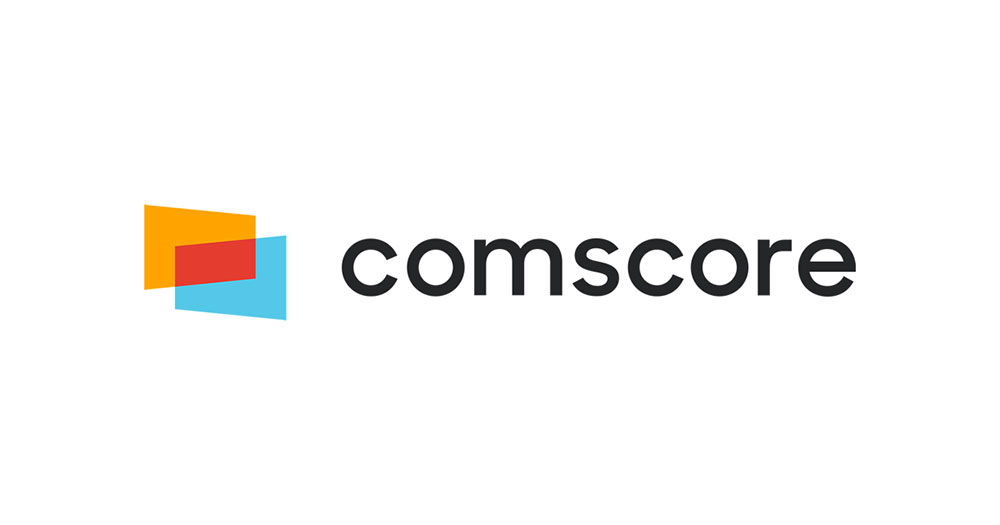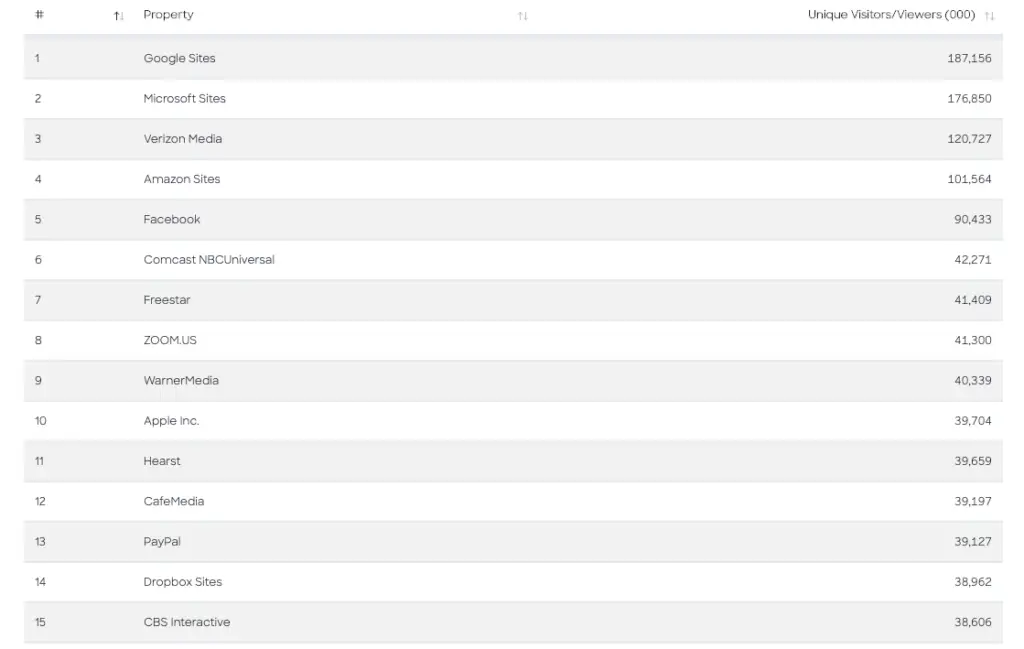Comscore
Comscore
Comscore is a trusted currency for planning, transacting, and evaluating media across platforms.
Comscore is a media measurement and analytics company that provides data and insights on digital, television, and film content. Their products and services include audience measurement, cross-platform measurement, and advertising analytics. They work with media companies, agencies, and advertisers to help them understand and navigate the digital landscape.
Comscore (NASDAQ: SCOR) is a trusted partner for planning, transacting and evaluating media across platforms. With a data footprint that combines digital, linear TV, over-the-top and theatrical viewership intelligence with advanced audience insights, Comscore allows media buyers and sellers to quantify their multiscreen behavior and make business decisions with confidence. A proven leader in measuring digital and TV audiences and advertising at scale, Comscore is the industry’s emerging, third-party source for reliable and comprehensive cross-platform measurement.
Plan
Connect the dots across multiple data sources to discover and act upon new opportunities to drive business growth.
Transact
Build your business around the transformative currency for media measurement in a cross-platform world.
Evaluate
Understand the impact of media and marketing efforts so you can improve ROI and make future decisions with confidence.
 Making measurement make sense
Making measurement make sense
 Leading Programmatic Targeting Solutions
Leading Programmatic Targeting Solutions
 A True View of Cross-Platform Social Audiences
A True View of Cross-Platform Social Audiences
Solutions
Measure and evaluate advertising across platforms
Measure digital audiences for all content types
Maximize marketing effectiveness
Measure global box office performance
Powerful programmatic tools to target cross-platform audiences
Understand the value of social media audiences
What does Comscore do?
Comscore is a global media measurement and analytics company. They offer 3rd-party measurement of audience demographics and performance for media across multiple mediums. From their own definition;
Comscore is a trusted partner for planning, transacting and evaluating media across platforms. With transformative data science and vast audience insights across digital, linear TV, over-the-top (OTT) and theatrical viewership, we are a powerful third-party source for reliable measurement of cross-platform audiences.
The idea behind 3rd-party audience tracking is to bring transparency to media and marketing, so businesses can use data to drive growth.

What are Comscore rankings and how do they work?
Comscore’s rankings are founded on the audience measurement services they sell/provide to publishers. The Comscore Media Matrix, which in 2016 accredited by the Media Rating Council (MRC) uses a series of “panels” to measure audiences.
These audience measurement services are often observed by advertisers and agencies. The main differentiator between Comscore and other web analytics solutions (like Google Analytics) is that their primary goal is to measure exactly who an audience is and their consumption behavior. It takes a slightly more traditional way of looking at human visitors since many mechanisms for tracking audiences across television and other legacy mediums are less objective than digital has become. Additionally, their panel method defines pageviews across all sites.
That said, the panels and measurement techniques used by ComScore, and competitor Neilson, both rely greatly on voluntary participation from all ecosystem parties to provide their composite scoring. This means audiences, publishers, and agencies/advertisers must all bend to the will of these 3rd parties if they want to participate in these systems.
Traditionally, the tracking of audiences has been wrought with criticism. But, recent acquisitions by large tech companies, like Moat, have demonstrated the value of tracking across the ecosystem; as both publishers and advertisers have long relied on an arbiter for campaign delivery.
Are Comscore rankings something that advertisers and publishers care about?
Advertisers and publishers do often care about Comscore rankings but not in the way that many might assume. The gross majority of advertisers likely have no idea what they are and pay little attention to these services. Agencies and top 50 brand publishers often pay much more attention to these metrics; as they are typically a point of contention in negotiating ad contracts. Comscore and their competitors live as a middle man in-between.
If a publisher doesn’t include Comscore pixels on their pages (often because they slow down sites and can cause errors), they’ll not be counted in Comscore’s rankings. But that actually doesn’t mean an advertiser won’t target an audience on their site…
... So, advertisers that DO use Comscore when buying through an agency will still target audiences on publisher sites that don’t use Comscore or their competitors.
So, what’s the point if you’re a digital publisher? It depends on the goals of a publisher. There’s little monetary incentive or advantage for just about anyone of the or digital publisher side, depending on which industry expert you ask. However, it is a competitive point of contention among some of the long-running media brands that used to depend on these scores or rankings for TV buying campaigns.
What does the Comscore Panel measure?
The panel measurements comprise the Comscore rankings—a monthly list of the top 50 digital properties across the web ranked by the number of unique visitors from highest to lowest.

Who or what makes up Comscore panels?
The “panelists” are identified by Comscore as either home or work-based machines. These have to be personally owned by the panelist (or household) to qualify them as home panelists. Computers owned by an employer qualify as work computers.
Some of the things the panel methodology can register unique visits across:
- Internet activity from all web entities, regardless of browser type
- Private browsing sessions / Secure sessions
- Content elements / streaming / instant messaging
- Web-based technologies and protocols
The panel is then weighted and projected to the home and work Internet universes in the United States, which allows the behavior of panelists to be projected to the U.S. Home and Work Internet user populations at large.
There are several pros and cons to using Comscore’s products and services.
Pros:
- Accurate measurement: Comscore’s data and insights are highly accurate and reliable, providing a clear and unbiased view of the digital landscape.
- Cross-platform measurement: Comscore’s products allow for the measurement of digital, television, and film content, providing a complete view of media consumption across different platforms.
- Advertising analytics: Comscore’s advertising analytics tools help companies and agencies to understand how their ads are performing, allowing them to optimize their campaigns for better results.
- Customizable: Comscore’s products and services can be tailored to meet the specific needs of different clients, providing a customized solution that fits their unique requirements.
Cons:
- Cost: Comscore’s products and services can be quite expensive, making them less accessible for smaller companies and organizations.
- Complexity: The data and insights provided by Comscore can be complex and difficult to interpret, requiring specialized knowledge to fully understand and use.
- Limited to digital platforms: Comscore’s products and services are limited to measuring digital, television and film content, while other important areas like radio, print, and outdoor are not covered.
- Limited to specific regions: Comscore’s products and services are limited to certain regions, meaning that they may not be as useful for companies and organizations that operate on a global scale.



